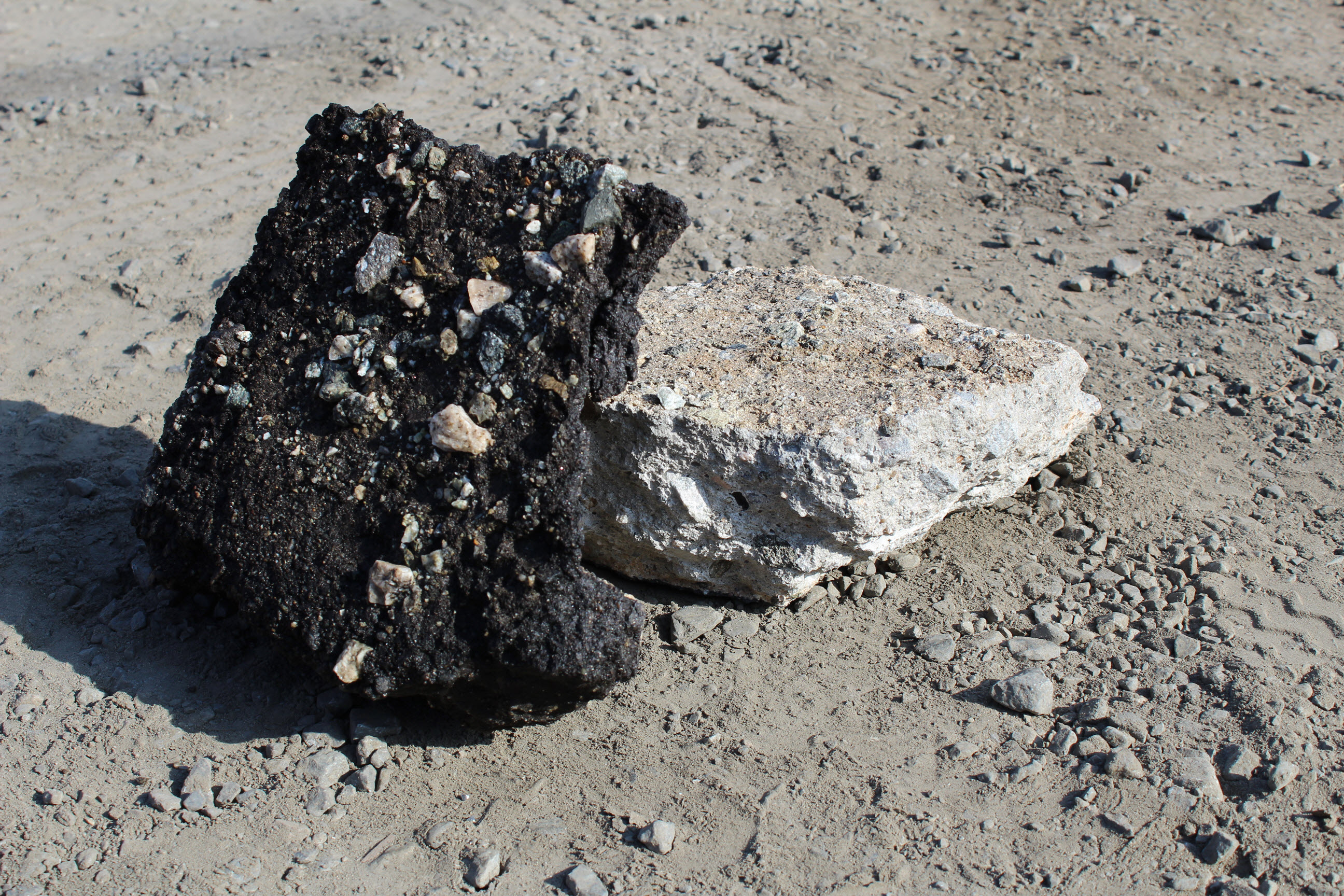The world of paving is dominated by two principle materials: concrete and asphalt. Either one can provide suitable results for paving everything from roads, to parking lots, to driveways. Yet that the does not mean that the two substances will provide equal results for all applications.

This article breaks down some of the key things to know when deciding between asphalt and concrete, providing you with the information you will need to make an educated decision about which material will best meet your needs.
Lifespan
One of the first questions people ask when choosing between asphalt and concrete is what kind of differences in lifespan they can expect. Generally speaking, a concrete surface will outlast an asphalt surface. Most concrete pavements have lifespans of between 30 and 50 years. The average asphalt pavement, by contrast, usually lasts between 12 and 20 years.
Of course, numerous factors will affect the lifespan of either type of pavement. The service life of concrete can vary significantly as the result of differences in the particular make-up of the mix, for instance the size of the aggregate used, as well as the water to cement ratio. The degree of compaction, and the rate of curing will also play a role in determining strength once fully dried.
Similar factors govern the longevity of asphalt surfaces, for instance the size and type of aggregate used. Some types of rock will not bond as tightly with the asphalt, making the pavement more likely to crumble and break apart as time goes on. The percentage of air voids in the pavement also affects asphalt's lifespan, with more voids putting the asphalt at greater risk of succumbing to water damage.
No matter what type of paving material you choose, it is important to have it installed by an experienced professional, one who can anticipate all of the numerous factors at play.
Cost
The added longevity of a well-installed concrete pavement comes at a greater cost — literally. According to one source, concrete tends to carry a cost of 3 to 10 dollars per square foot. Asphalt, meanwhile, carries a per square foot cost of 2 to 5 dollars. That said, the cost of asphalt is prone to fluctuations in the petroleum market, so prices may vary.
The differences in asphalt and concrete costs reflect the fact that installing a concrete surface requires more preparation and time. Wooden forms must be erected around the pour site, the sub-base must be carefully leveled, and the fresh concrete must be adequately protected against excessive evaporation as it cures.
In terms of overall value, most contractors agree that asphalt makes a better choice. Even though you will have to replace the pavement more frequently, its overall lower cost — as well as the greater ease of making repairs — helps to give asphalt a slight edge.
Environmental Impact
Asphalt and concrete are the most recycled construction materials on the planet. Excess materials from each job site are always dumped at a materials plant to be recycled for later use. You can rest easy knowing that regardless of your choice of building material, asphalt or concrete, the environmental impact will be the same.
Maintenance
When making a financial analysis, it is also important to consider the costs of maintaining your pavement as time goes on. In general, asphalt requires more frequent maintenance —usually in the form of sealcoating — in order to protect against potholes, cracks, and other problems. Plan to have your asphalt sealcoated roughly every two years for maximum protection.
Sealcoating refreshes the binder used to hold together aggregate particles in the asphalt. Without this necessary measure, the binder will weaken and aggregate will be stripped from the surface in a process which paving professionals refer to as raveling. The better you protect asphalt from such damage, the less effort you will have to spend repairing damage.
Concrete can also be sealed to boost its environmental resistance, although it does possess a greater degree of natural durability than asphalt. Nonetheless, exposure to substances like water and deicing salts can increase the rate of concrete degradation — especially when coupled with temperature fluctuations around the freezing point.
Concrete is more susceptible to unsightly staining than asphalt, whose naturally black exterior masks common contaminants. That said, certain types of stains can be highly destructive for asphalt, particularly oil. If not removed quickly, oil will cause the asphalt binder to become excessively soft, leading to potholing, surface loss, and other problems.
Ease of Repairs
Both concrete and asphalt will likely suffer from some sort of damage during the course of their lifespan. The more proactive you are about repairing damage quickly, the less it will likely cost you. That said, repairing concrete tends to be far more expensive than repairing asphalt due to inherent differences between the two materials and how easily they will receive patches.
Asphalt repair techniques tend to fall into three main categories:
- Surface patching
- Spray injection
- Infrared heater patching
Surface patching is best for treating small areas of damage. Once any debris has been cleared away, and the inside of the damaged area carefully cleaned, a patching substance is used to restore a level surface to the pavement. Spray injection and infrared heater patching, by contrast, use asphalt patching vehicles to repair larger areas of damage.
Contractors also have a variety of techniques used to repair concrete damage. Cracks can be repaired using either the technique known as muting and sealing, or that known as stitching. Spalling and other wide-spread forms of damage may require a concrete overlay to be installed — in other words, a new thin layer of concrete placed atop the damaged older layer.
Installation Time
If you are having an all new section of pavement installed, you should also understand that asphalt and concrete have different installation times. In terms of site preparation, the two types of paving require similar effort. The installation area must be carefully leveled and compacted, and a sub-base of crushed gravel should be installed.
The primary difference in terms of installation time has to do with how long it takes the installed pavement to be safe for driving. Both types of material need time to cure before they can bear the weight of vehicles. Yet asphalt should be safe for driving after about three days, whereas concrete can take seven days (or more, depending on the weather) before it will be hard enough for driving.
There is no clear winner when it comes to comparing asphalt and concrete pavement. Instead, you must consider the purpose of your pavement, as well as the type of traffic it will receive. For more information about selecting the right type of pavement for your needs, contact the industry experts at Empire Parking Lot Services. Please check out our "Anatomy of a Parking Lot" blog for a more in-depth view of what makes up a parking lot.
Other Concrete Related Blogs:




Comments